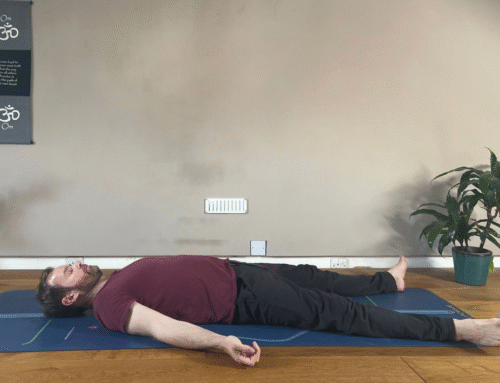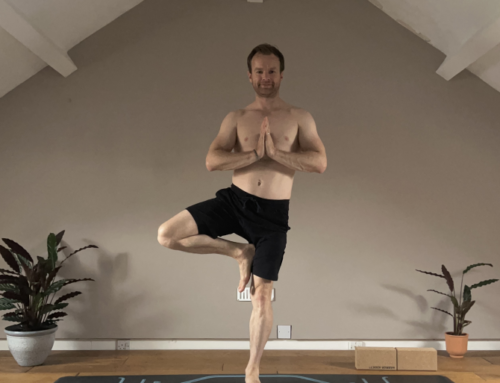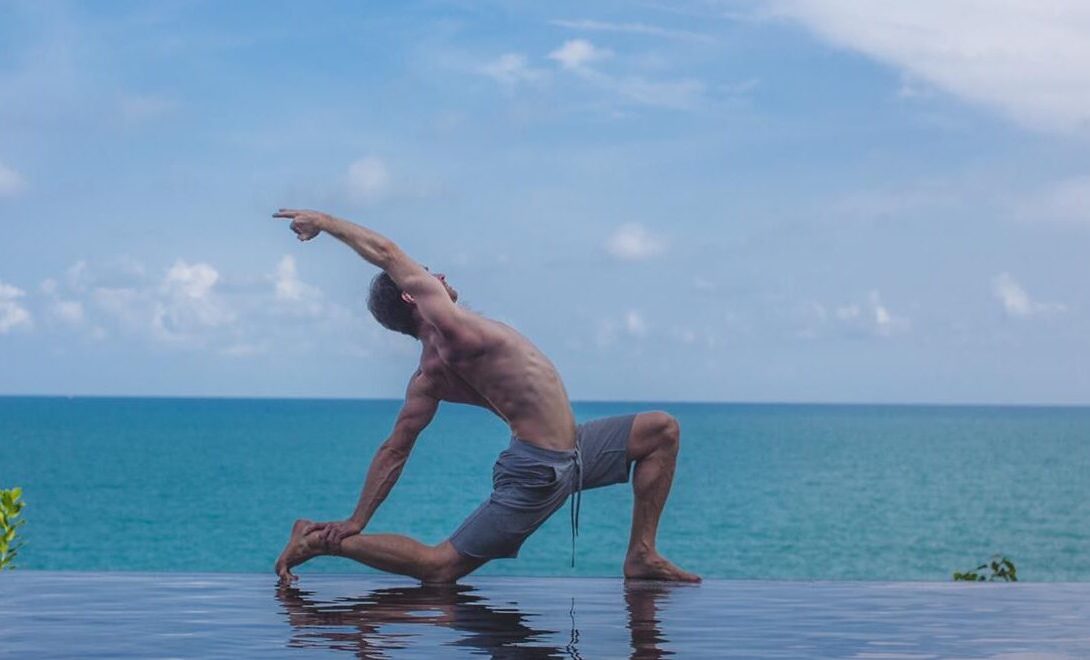
Enhance Your Yoga Asana Practice with Low Lunge (Anjaneyasana): Steps, Benefits, and Variations
I’m Dav Jones, a senior yoga teacher and teacher trainer. In this blog, we’ll dive deep into the essence of Low Lunge, also known as Anjaneyasana. Together, we’ll explore its significance in yoga asana, uncover its physical and mental benefits, and discuss the key muscles it engages. I’ll guide you step-by-step through the posture, offer helpful modifications, and highlight potential precautions. Whether new to yoga or looking to refine your practice, this guide will help you master Low Lunge (kneeling lunge) safely and effectively. Let’s begin!
What is Low Lunge (Anjaneyasana)?
Low Lunge, or Anjaneyasana, is a foundational yoga posture that stretches and strengthens the body. The pose is named after the child hero Hanuman (Anjaneya) from Hindu mythology, symbolizing courage and devotion. This asana primarily focuses on hip and ankle flexibility, making it a versatile addition to your yoga practice.
Low Lunge Translation
- Sanskrit: Anjaneyasana
- Pronunciation: Ahn-jah-nay-ah-sa-na
- Meaning: Anjaneya refers to Hanuman, and Asana means pose. Together, they celebrate the dynamic balance of strength and flexibility.
- Yoga Level: Beginner to Intermediate
- Pose Type: Standing with the rear knee grounded
Benefits of Low Lunge (Anjaneyasana)
Physical Benefits
- Enhances Hip Flexibility: Stretches the hip flexor group of muscles and the abdominals.
- Strengthens Key Muscles: Contracts the glutes in the rear leg, eccentrically lengthens quadriceps in both legs.
- Mobilises Your Body: Opens the chest and shoulders, and brings mobility to ankle function.
- Increases Circulation: Boosts blood flow to lower extremities, improving muscle recruitment.
Mental Benefits:
- Mental Acuity: The concentration required in this pose can help to boost mental acuity.
- Boosts Energy: Due to the nature of this posture more so being in the ‘backbend’ family of asana’s it will have a more stimulating effect on the practitioner’s nervous system.
Preparatory Poses for Low Lunge
Warm up your body with these preparatory poses to ease into Low Lunge:
1. Happy Baby Pose:
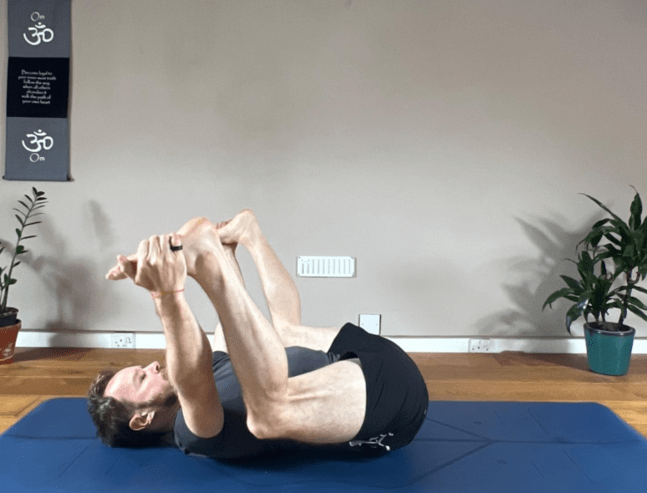
This supine pose is a great way to stretch and mobilise the muscles surrounding the region of the hips and upper legs.
2. Cat-Cow Pose:
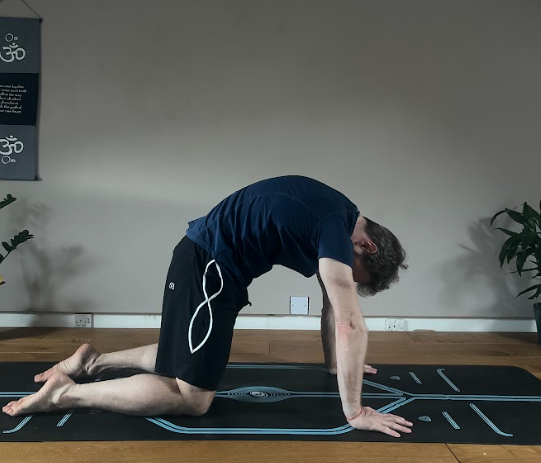

Mobilises the spine, hips and shoulders.
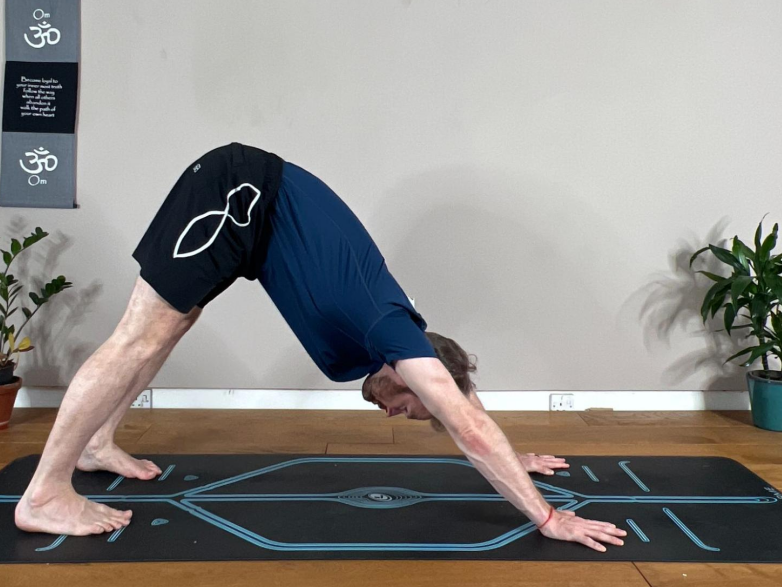
This posture helps to lengthen the muscle/fascial tissue of the posterior (back) body and shorten the muscles in the anterior (front) body, ideal as a preparatory pose for Anjaneyasana.
4. Lizard Pose:
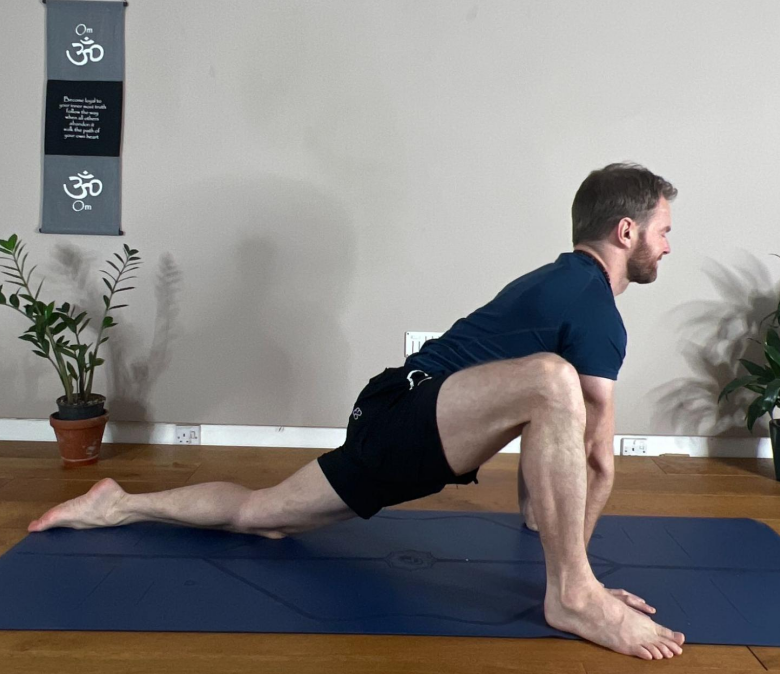
Opens up hip muscles and stretches muscle tissue in both the front and rear legs
5. Warrior II:
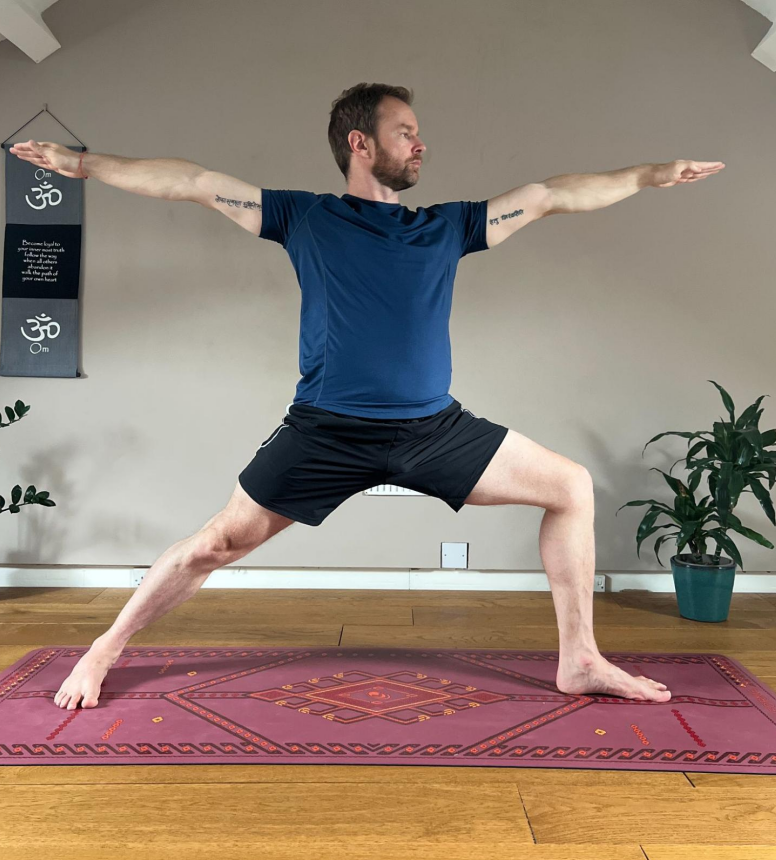
Builds strength through your legs and also helps to more gently stretch the psoas major muscle (a large hip flexor muscle). This is an ideal pose to use in preparation for Kneeling Low Lunge.
Step-by-Step Guide to Performing Low Lunge (Kneeling Lunge)
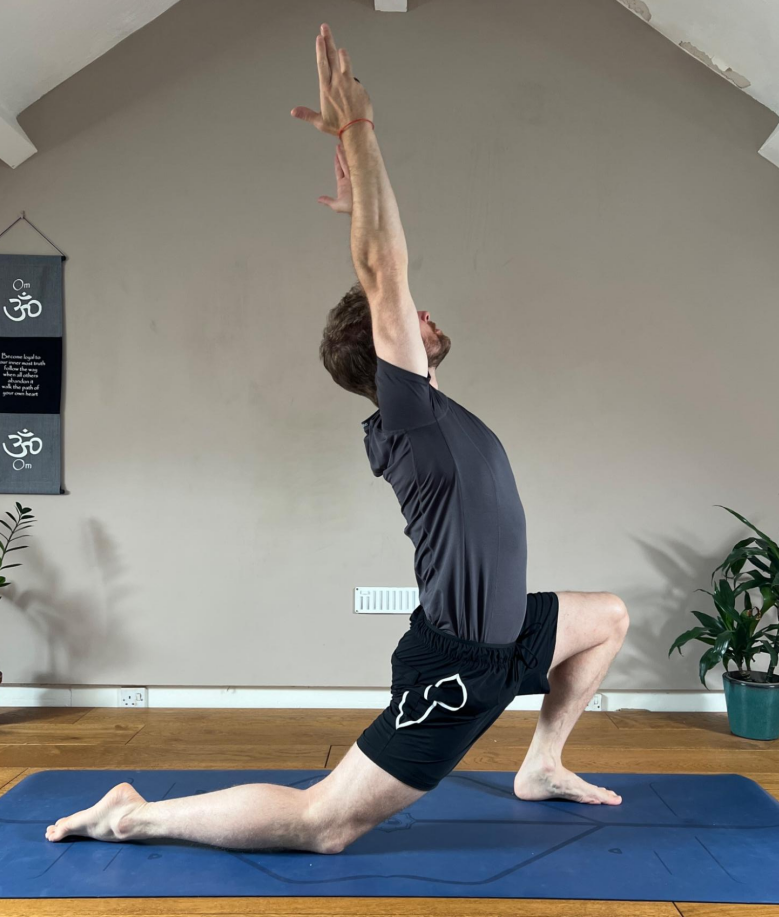
1. Start in Downward-Facing Dog.
Exhale and step your left foot forward between your hands.
2. Lower the Back Knee.
Bring your right knee to the mat and press both front and rear foot down into your mat. Engage the glute in your rear hip.
3. Stack the Rear Hip over Your Rear Knee.
Stack your right hip directly over your right knee in the rear leg.
4. Raise Your Arms Above Your Head.
Inhale, raise your arms above your head and look up.
Rotate your arms externally, little fingers turned in and with your palms facing back.
5. Increasing the Intensity in the Posture.
Exhale, lean your weight forward into your front foot/ankle to increase the stretch through the hip flexor muscle group in the rear leg.
Stay for 3-5 breaths, deepening the pose with each exhale.
6. Switch Sides.
Return to Downward-Facing Do and repeat on the other side.
Practicing the Fundamentals of the Pose:
- Keep the legs activated: Throughout the pose, press both feet downwards into your yoga mat.
- Overarched Lower Back: Keep the rear glute engaged to maintain stability of the sacrum on that side of the hip. Reach up through your fingers, elevating the shoulder joints. Practice aiming to telescope your ribcage up and away from the hip joint to bring space in the lumbar regions of the spine.
- Adequate Width and Length Between Feet: Find a suitable width of your feet that allows for stability in the pose and space in your hips.
Modifications for Beginners
If you’re new to yoga, make Low Lunge more accessible with these adjustments:
- Use Props: Place yoga blocks under your hands for added support.
- Cushion the Back Knee: Use a folded blanket to reduce discomfort in the knee.
- Keep Hands on Hips: This option will primarily bring the focus to the sensation to the hips.
Variations to Deepen the Posture:
Ready to take it further? Try these variations:
1. High Lunge (Alanasana):
Lift the back knee to add in a more strength-based posture along with the addition of balance.
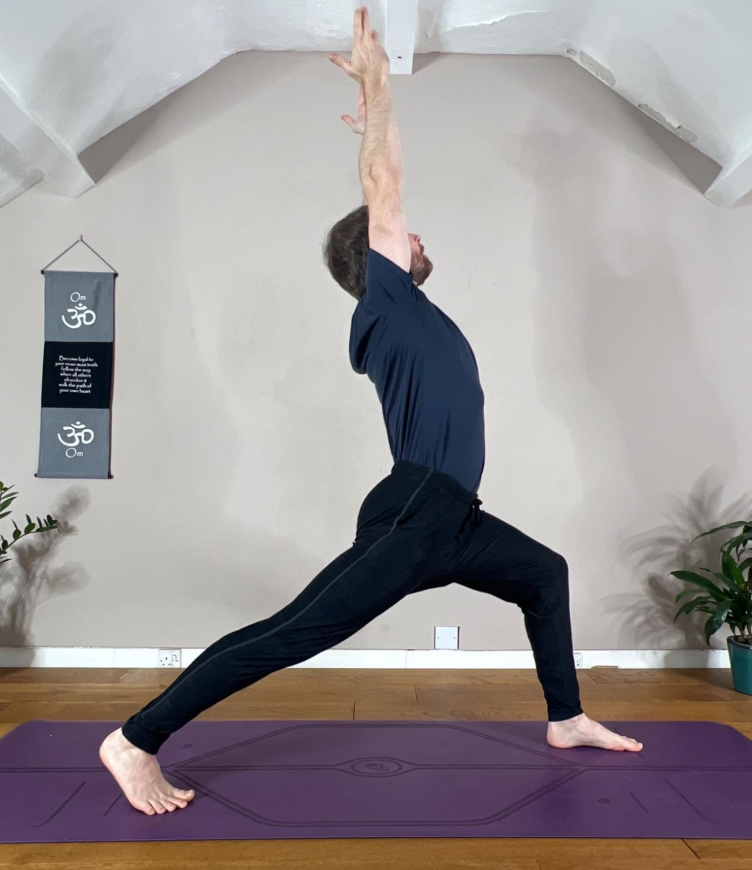
2. Revolved Low Lunge:
Add a twist, bringing your hands into prayer position while rotating the torso toward the front leg.
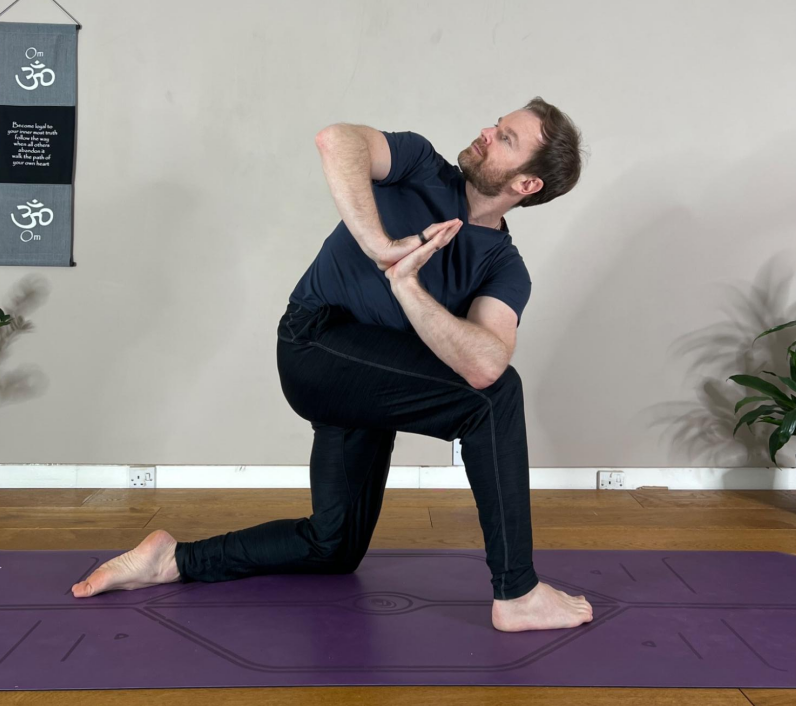
3. Low Lunge with Quad Stretch:
Bend the back knee and grab your foot with the same-side hand, opening the quadriceps in the rear leg.
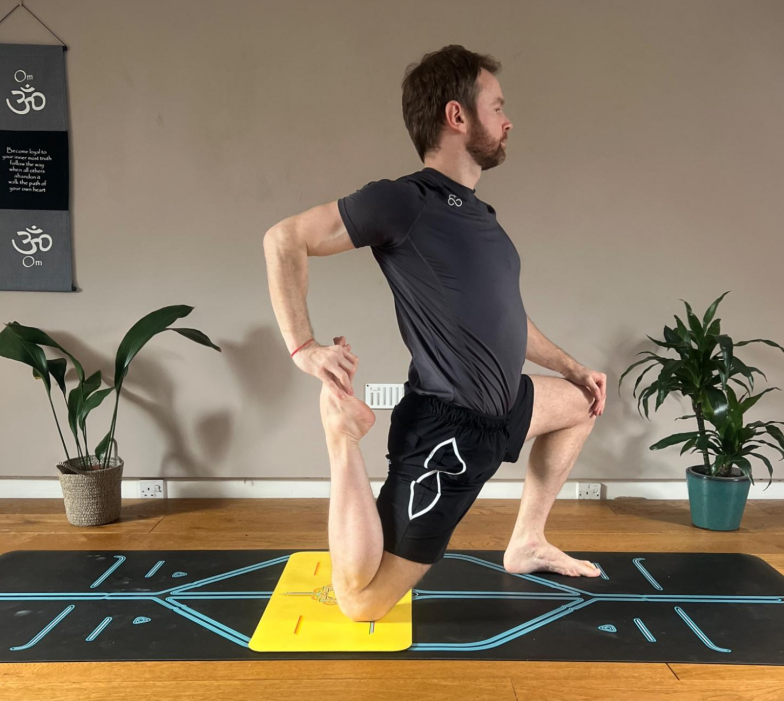
Integrating Low Lunge into Yoga Sequences
Low Lunge is a versatile pose that complements various yoga flows:
- Sun Salutations: Anjaneyasana works well in Sun Salutations, and features in the Sun Salutation ‘C’ sequence.
- Balance Sequences: Combine with Warrior III to build stability.
Safety Precautions and Contraindications
- Knee Injuries: Use extra padding and avoid sinking too deep.
- Pregnancy: Modify with a shorter stance and avoid deep backbends.
Final Thought
If you’re inspired to deepen your yoga practice and explore the benefits of Low Lunge further, join the Dav Jones Yoga online classes available on Patreon. With sessions designed for all levels, from beginners to advanced practitioners, you’ll find tailored guidance to enhance your practice. Additionally, the DJY mentorship program offers personalized guidance on your yoga path. These resources are created to elevate your journey, helping you grow and thrive with Dav Jones Yoga. Step into your practice and discover your full potential with us.






